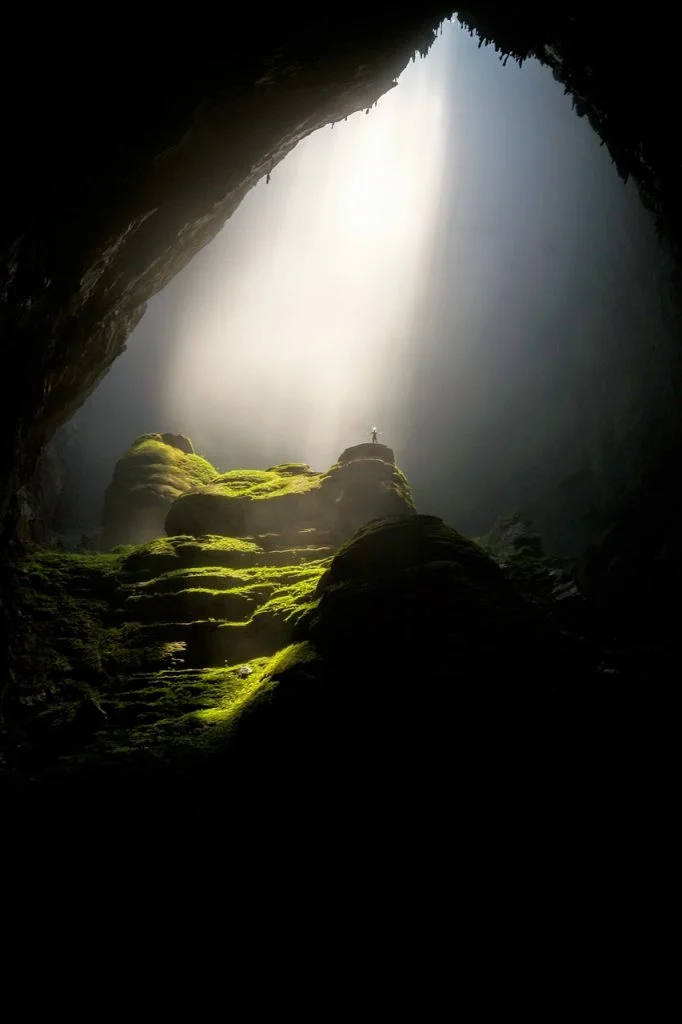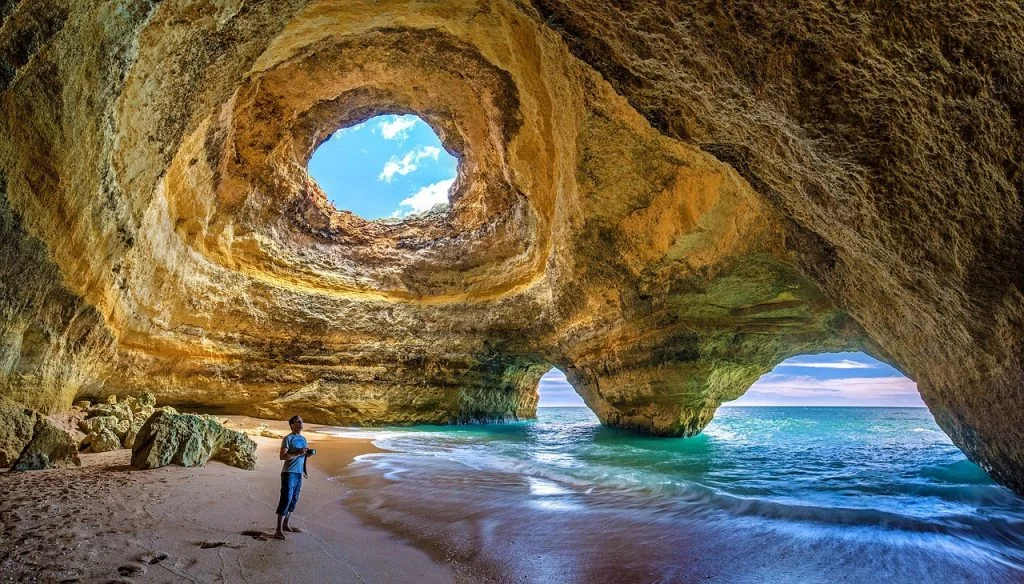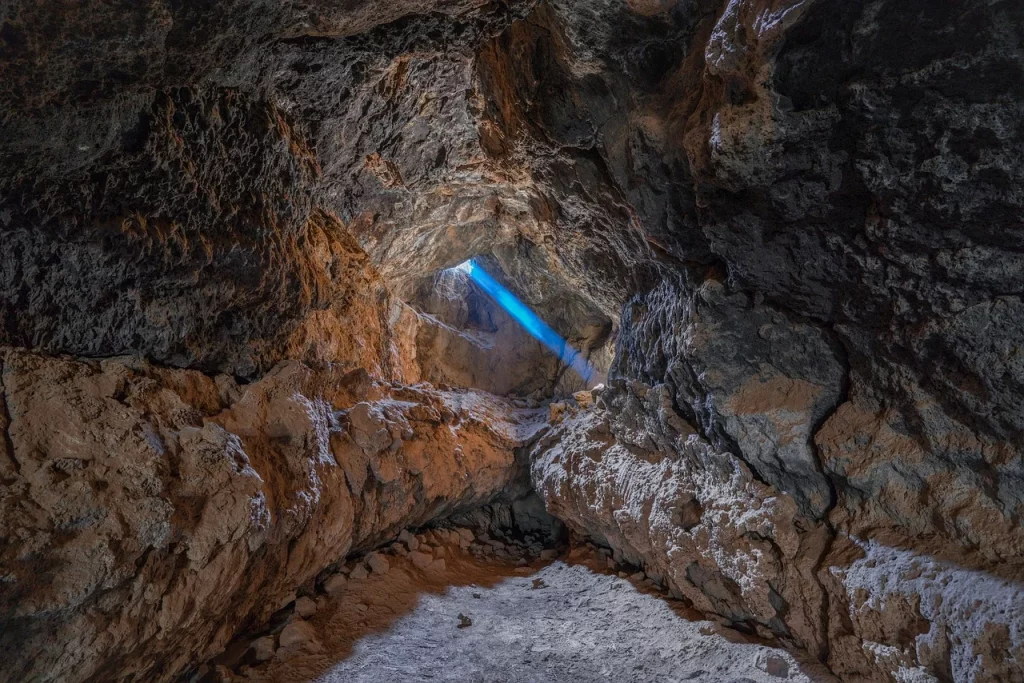Ah, caves – nature’s mysterious and often misunderstood underground wonders. My fascination with caves began when I was a kid, armed with nothing but a flashlight and imagination. I remember squeezing through the narrowest of crevices, convinced I was about to uncover a hidden world of stalactites, stalagmites, and maybe the odd dragon or two.
But instead of mythical creatures, I found something even more magical: a realm where history, geology, and a bit of silence mingled in the dim light. Have you ever felt the thrill of discovering something ancient and untouched? It’s like stepping into a different universe.
The deeper the cave, the more striking the treasures.
Anonymous
Cave Facts
Welcome to this fascinating journey through the mysterious world of caves. Stay with me as we explore these natural wonders, and don’t forget that I created a quiz at the end of this article to test your knowledge on this topic. Don’t disappoint me.
- Caves are natural underground spaces, large enough for humans to enter.
- The study of caves is known as speleology.
- Caves can form through various processes, including the dissolution of limestone by acidic water.
- Stalactites hang from the ceiling of a cave, formed by mineral deposits.
- Stalagmites grow up from the floor, often meeting stalactites to form columns.
- Some caves host unique ecosystems with specialized wildlife adapted to the dark, isolated environment.
- The deepest known cave is the Veryovkina Cave in Georgia, over 2,200 meters deep.
- Cave temperatures tend to be consistent, mirroring the mean annual temperature of their locations.
- Ancient human artifacts and cave paintings have been discovered in many caves.
- Limestone caves often form karst landscapes, characterized by sinkholes and underground rivers.
- Ice caves feature significant amounts of ice that can persist year-round.
- Sea caves are formed by the power of ocean waves eroding weaker parts of rock cliffs.
- Caves with large openings to the surface can host unique microclimates inside.

- Volcanic caves, or lava tubes, are formed by flowing lava moving beneath hardened surfaces.
- The longest known cave system is Mammoth Cave in Kentucky, USA, with over 400 miles explored.
- Caves can preserve climatic and environmental records in their sediments and formations.
- Subterranean rivers in caves can emerge as springs at lower elevations.
- Gypsum flowers, delicate crystal structures, can form in drier parts of caves.
- Bat colonies often inhabit caves, playing vital roles in cave ecosystems.
- Lechuguilla Cave in New Mexico is famous for its rare, beautiful speleothems.
- Cave diving is a specialized and risky form of exploration in submerged caves.
- Therapeutic properties have been attributed to the air in certain caves.
- Caves can act as natural time capsules, preserving biological and geological materials.
- Helictites are unusual speleothems that grow in random directions, defying gravity.
- Speleothems form over thousands to millions of years, depending on the environment.
- The world’s largest cave chamber, the Sarawak Chamber in Malaysia, can fit 40 Boeing 747 airplanes.
- Cave ecosystems are often fragile and sensitive to environmental changes.
- Troglobites are creatures that have evolved to live exclusively in cave environments.

- Solutional caves are the most common type, formed by chemical erosion.
- Some caves have healing traditions associated with them, attracting visitors seeking cures.
- Archeological sites in caves have provided insights into human evolution and history.
- Crystal caves, like Mexico’s Giant Crystal Cave, contain massive selenite crystals.
- Talus caves form from rockfalls and are characterized by large, open spaces.
- Underwater caves can contain ancient fossilized remains of extinct animals.
- Glowworms can illuminate certain caves, creating a starry effect on the ceilings.
- Cave acoustics have been used for musical performances due to their unique sound properties.
- Snottites are biofilms of bacteria that hang from cave ceilings, resembling mucus.
- Primitive cave dwellings have been used by humans for shelter throughout history.

- Phreatic caves form below the water table, where all voids are filled with water.
- Caves can contain mineral deposits of commercial value, like guano for fertilizer.
- Anchialine caves are coastal caves flooded with seawater, often with unique ecosystems.
- Dark zones in caves are areas where no natural light penetrates.
- Fengcong and Fenglin are types of karst topography with numerous caves.
- Some religious practices regard caves as gateways to the spiritual world.
- Cave air can be low in oxygen and high in carbon dioxide, especially near decomposing material.
- Glacier caves are formed within the ice of a glacier and change with the glacier’s movements.
- Artificial caves, like catacombs, are human-made and often have historical significance.
- Many caves are protected as natural heritage sites due to their unique features and biodiversity.
- Speleotherapy involves using cave environments to treat respiratory diseases.
- Cave bioluminescence can be caused by fungi, bacteria, or chemical reactions.
Cave Myths

Now that we’ve journeyed through these fun facts about caves, let’s venture deeper into some popular myths about them and uncover the actual truth.
- Caves are Always Dark and Lifeless
While caves are naturally dark environments, many are teeming with life. Adapted to the darkness, numerous species thrive in caves, such as bats, blind fish, and unique insects. The absence of light has led these creatures to develop fascinating survival strategies. - All Caves are Cold and Damp
Not all caves are cold. The temperature inside a cave is usually consistent and reflects the average annual temperature of the region. In tropical areas, caves can be quite warm, while in other regions, they might be cooler. - Stalactites and Stalagmites Grow Very Fast
These fascinating cave formations grow extremely slowly, often just a few millimeters per year. Their growth depends on the drip rate of mineral-rich water and the cave’s environment. - Caves are Bottomless Pits
This is a dramatic exaggeration. While some caves have deep chambers and vertical drops, they are not bottomless. Many caves have been fully mapped, revealing their true extent and depth. - Bats in Caves are Dangerous and Attack Humans
Bats, commonly found in caves, are generally harmless and do not attack humans. They play essential roles in ecosystems, such as pollinating plants and controlling insect populations. Most bats are shy and will avoid contact with humans.
No products found.
Cave Quotes

Caves have fascinated humans for centuries, and many quotes reflect the mysterious and inspiring nature of these natural formations. Here are my favorites:
In every walk with nature, one receives far more than he seeks.
John Muir
This quote by naturalist John Muir reflects the profound and unexpected insights one gains from exploring nature, such as caves.
The cave you fear to enter holds the treasure you seek.
Joseph Campbell
Joseph Campbell, a famous mythologist, uses the metaphor of a cave to signify the daunting challenges that, once faced, lead to personal growth and discovery.
Caves are whimsical things, and geology on a local scale is random and unpredictable.
William Stone
Explorer William Stone comments on the unpredictable and unique nature of each cave, highlighting the sense of adventure in cave exploration.
There is something at once sobering and absurd in the spectacle of a human being trying to make his way through a cave.
Roger Brucker
Cave explorer Roger Brucker captures the humbling yet somewhat comical experience of a person navigating the complex and unfamiliar terrain of a cave.
Nature is not a place to visit. It is home.
Gary Snyder
Poet Gary Snyder reminds us that natural spaces like caves are more than destinations; they are integral to our sense of belonging and home.
Cave FAQ

After getting wisdom from these quotes, it’s time to find some answers in the FAQ section. Read carefully, as the quiz awaits to test your cavernous knowledge!
- How is a Cave Formed?
Caves are like nature’s secret rooms! They’re formed when water, wind, or volcanic activity erode rock, often over thousands of years. Limestone caves are the most common; they’re created by rainwater, which becomes slightly acidic as it passes through the soil, dissolving the limestone as it seeps or flows underground. - Are Cave Crickets Real?
Yes, they are! Cave crickets, also known as camel crickets, are a real thing. They’re not your usual chirpy garden crickets, though. These guys love damp, dark places like caves and don’t have wings. They’re known for their long legs and hunched back. - When Did Cave Paintings Start?
Cave paintings are ancient graffiti from a time without smartphones and cameras! They started appearing around 40,000 years ago, during the Upper Paleolithic period. These paintings are like messages from our ancestors, showing animals, humans, and symbols, giving us a glimpse into their lives. - Are Cave Spiders Poisonous?
The thought of cave spiders can be a bit spooky, right? While there are many types of spiders that live in caves, most of them are harmless to humans. Some can bite if provoked, but their venom is usually not dangerous. It’s always good to be respectful and cautious around them, though! - Which are Some Famous Caves in the World?
There are numerous famous caves. Some examples are the Carlsbad Caverns in the USA, the Lascaux Caves in France, the Waitomo Glowworm Caves in New Zealand, the Crystal Cave in Mexico and Jeita Grotto in Lebanon.
No products found.
Cave Trivia

Welcome to the Ultimate Cave Quiz! If you don’t get any questions right, be prepared to navigate your way out of a labyrinth of puns as twisty as the deepest cave!
Conclusion
As we finish this journey through the dark, echoing corridors of caves, we’ve uncovered not just their geological significance but also their mystique and allure. These natural wonders, formed over millennia, remind us of the Earth’s dynamic nature and our tiny place within it.
Isn’t it fascinating how something as simple as water and time can sculpt such majestic and awe-inspiring structures? Have you ever experienced the profound silence of a cave, where the world above seems like a distant memory? Let me know your stories in the comments.


